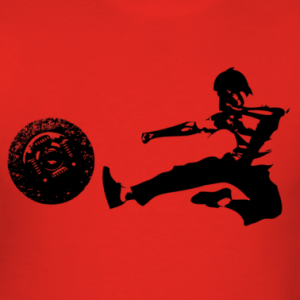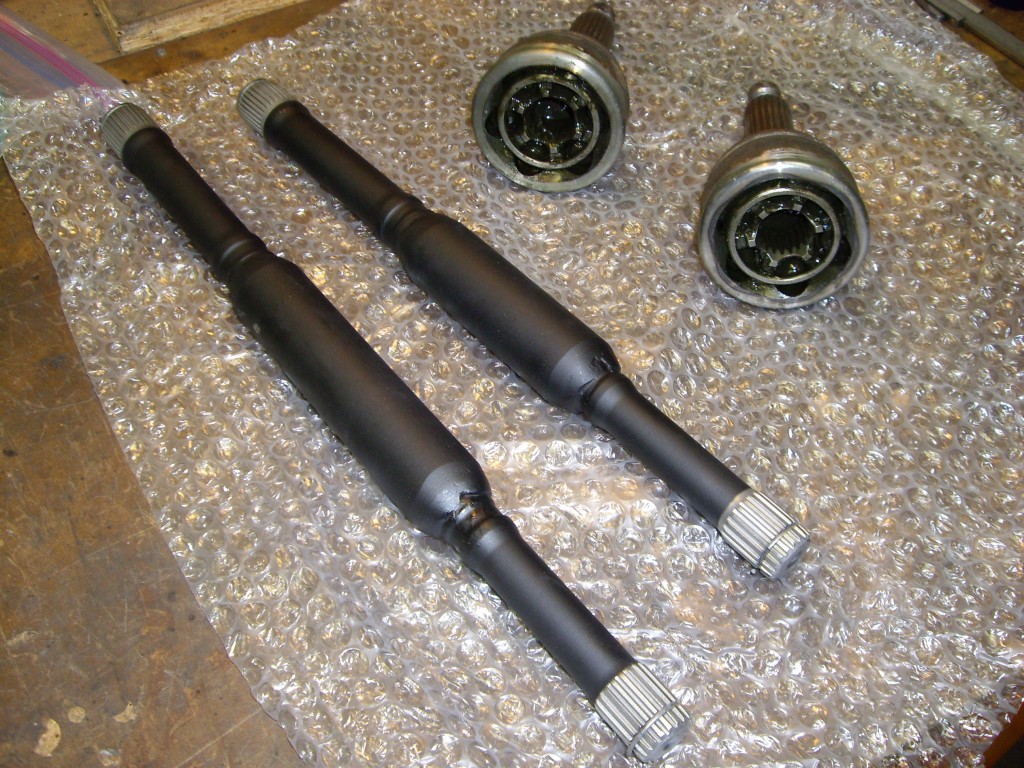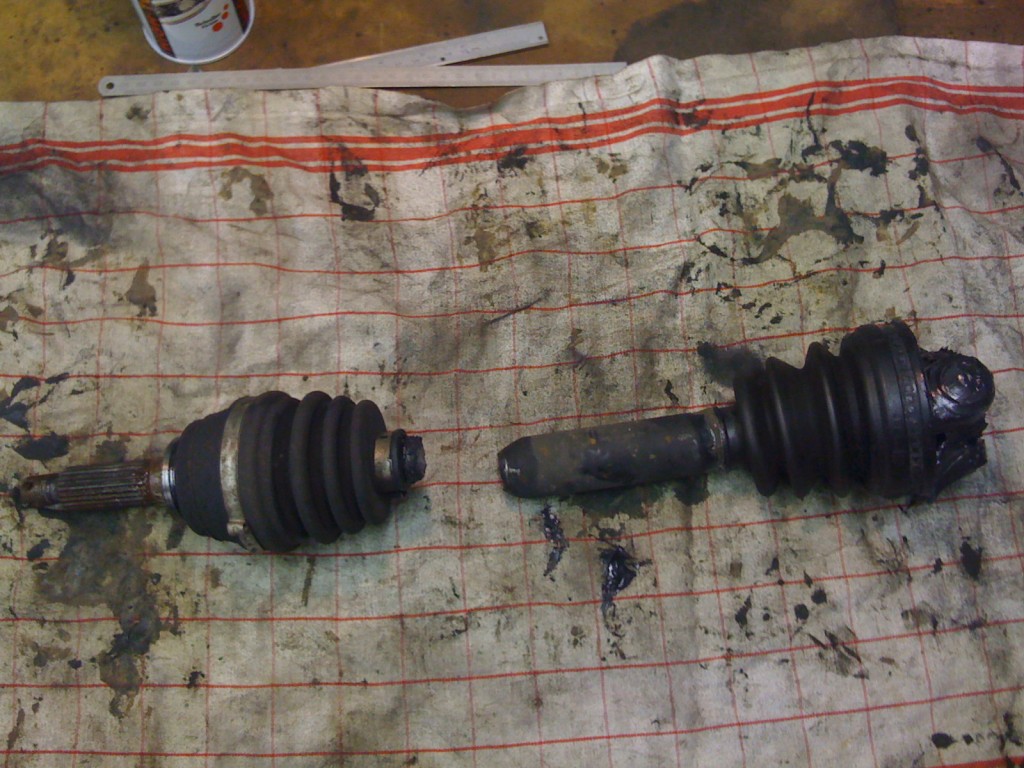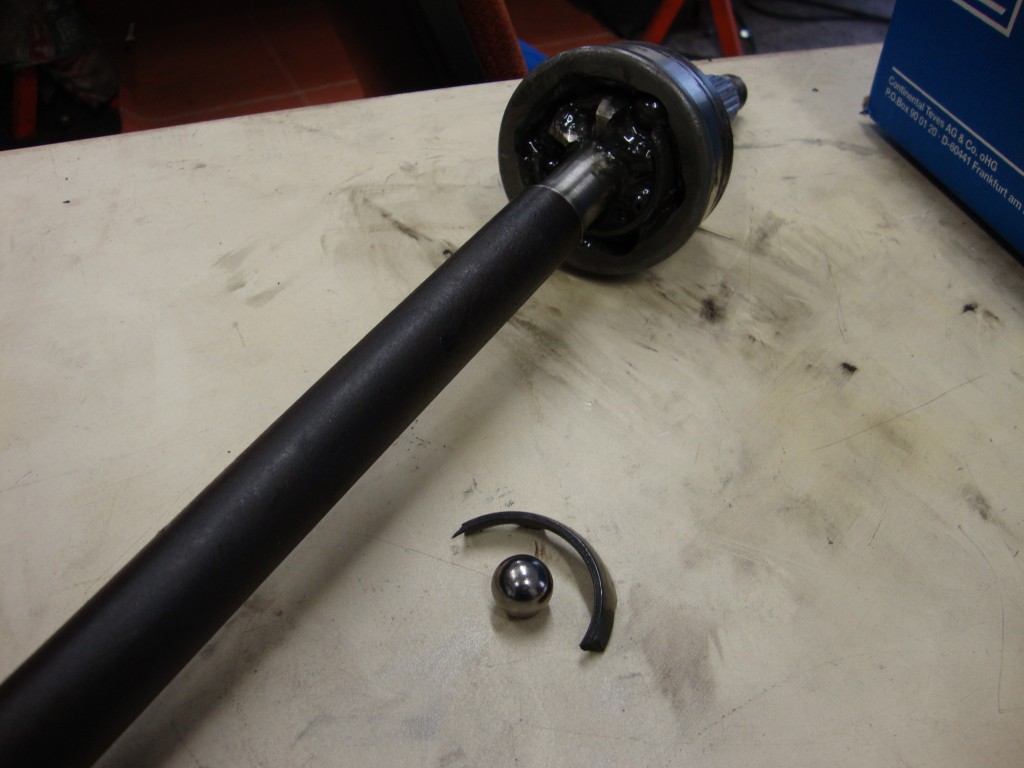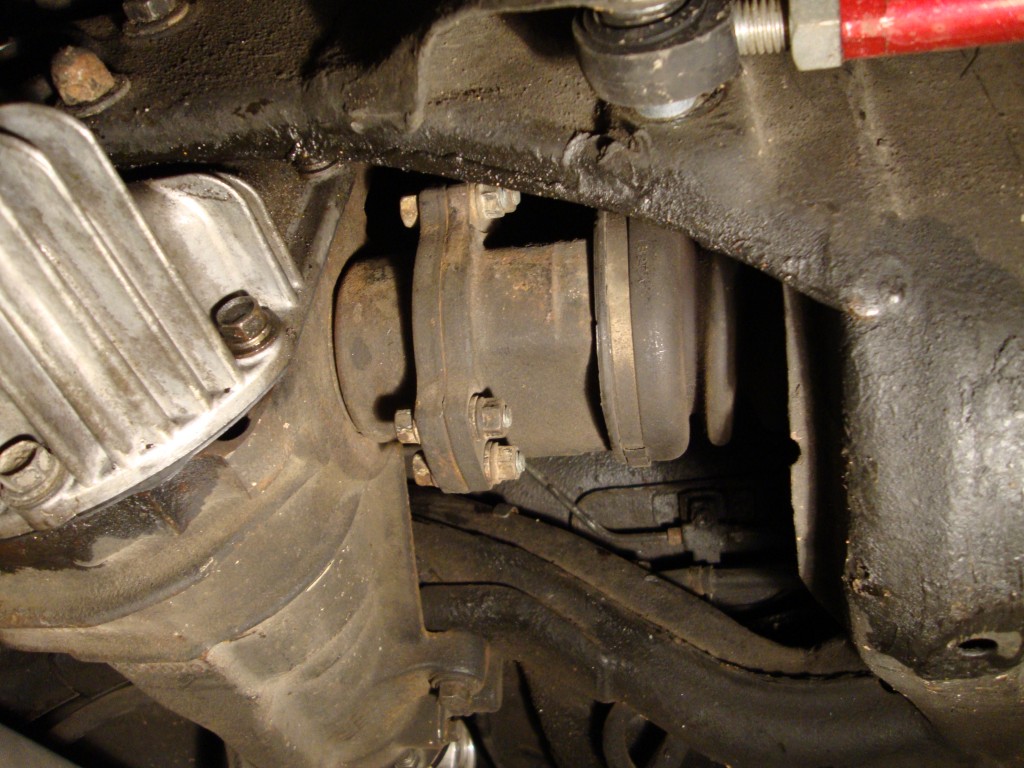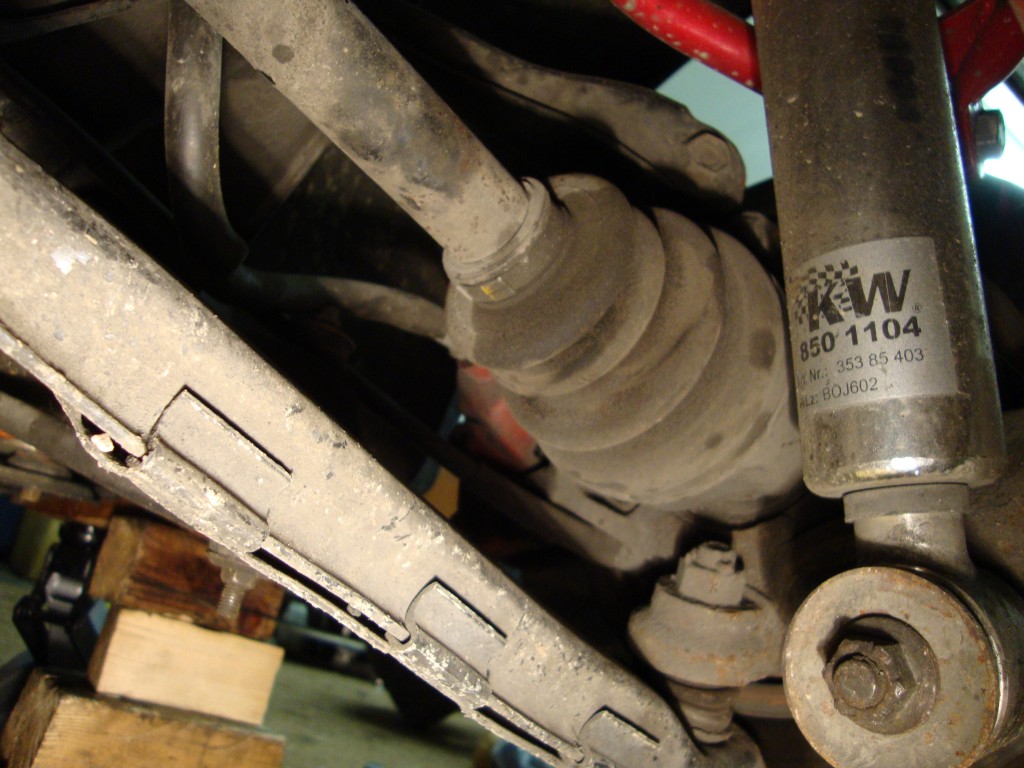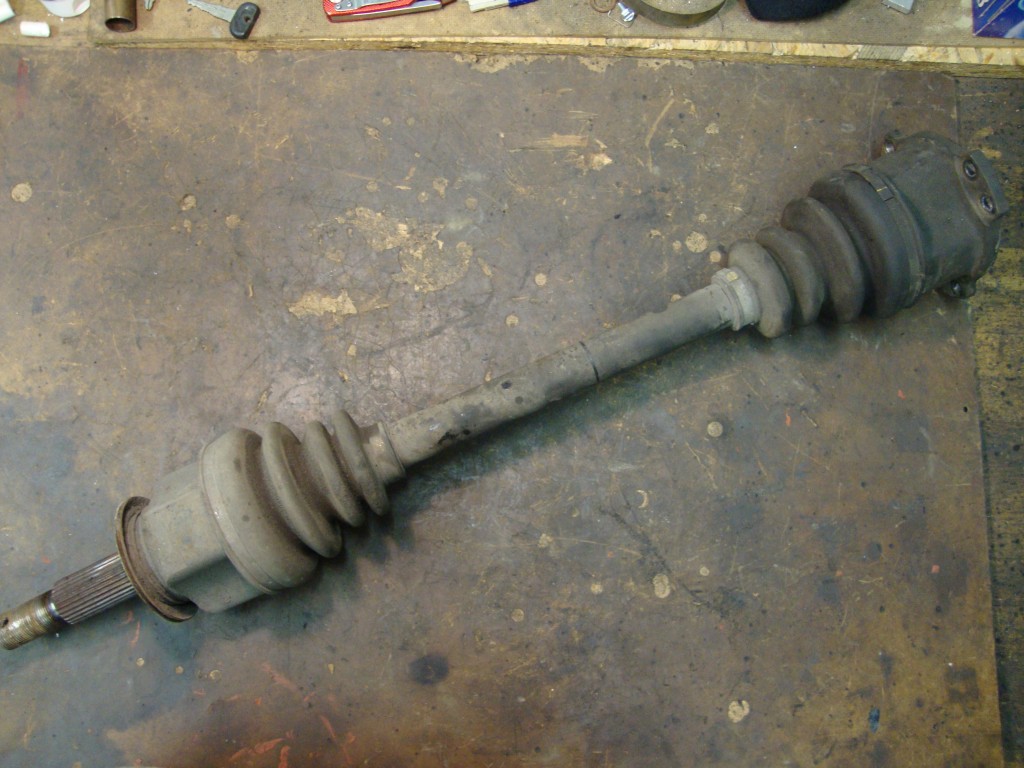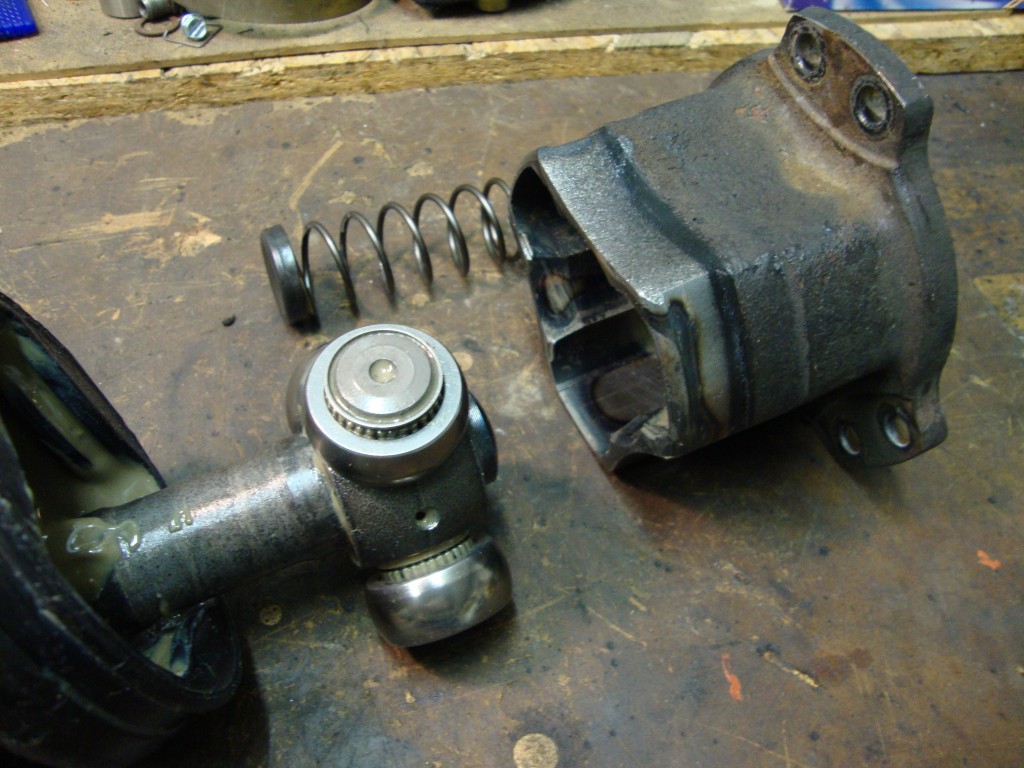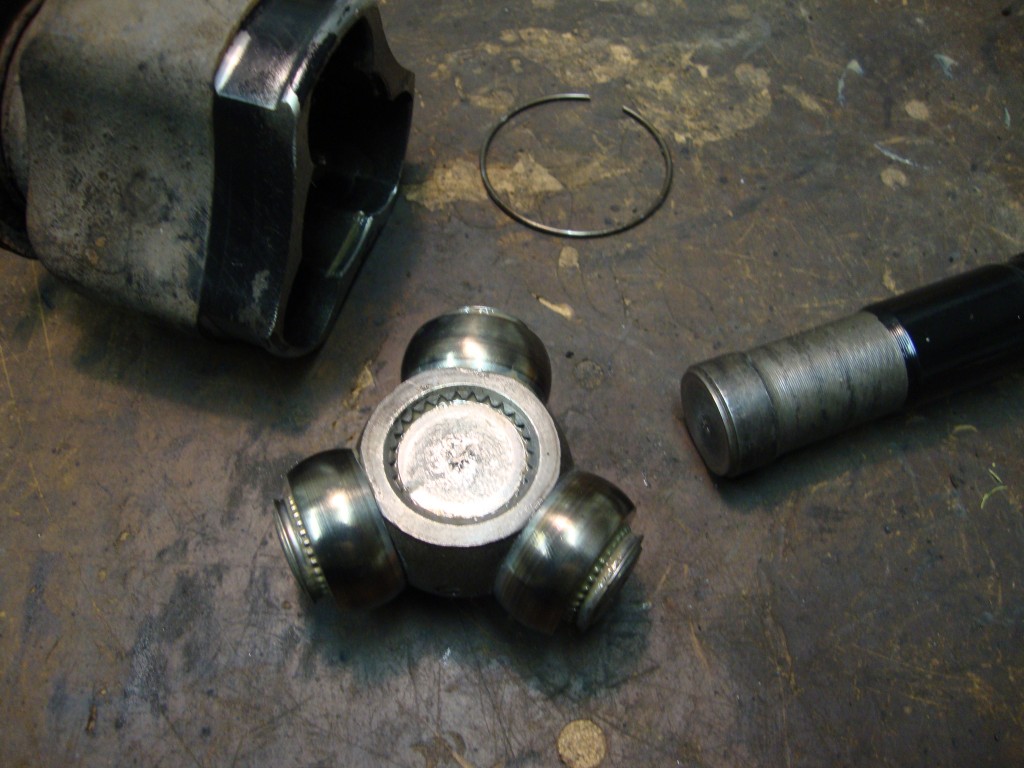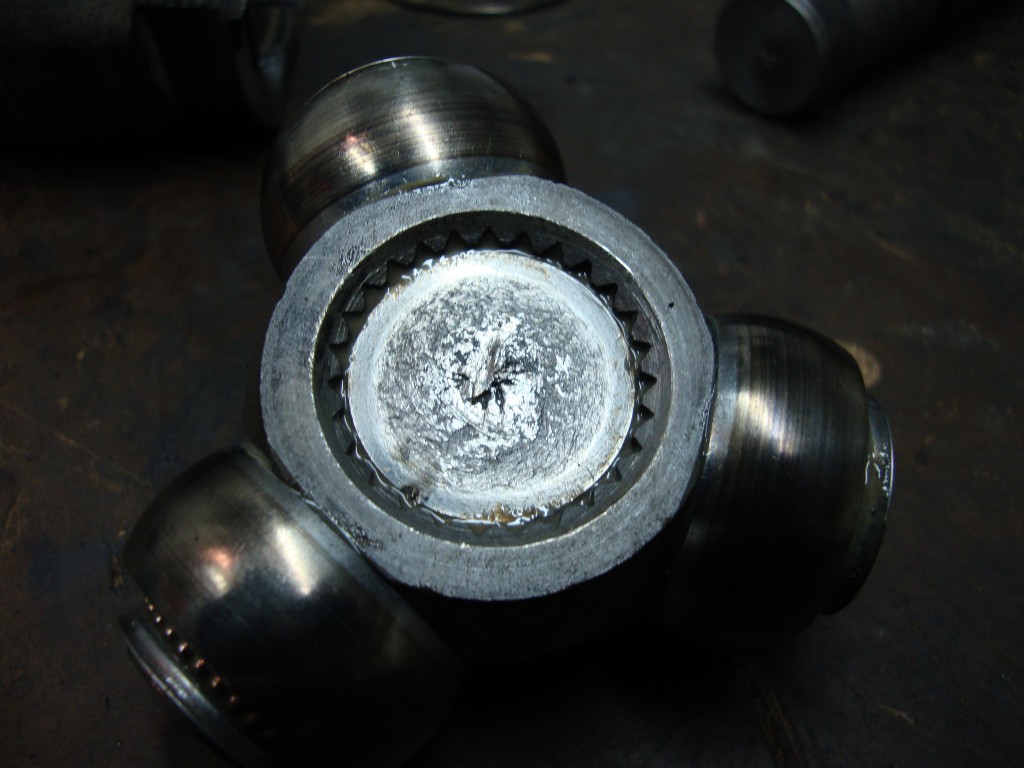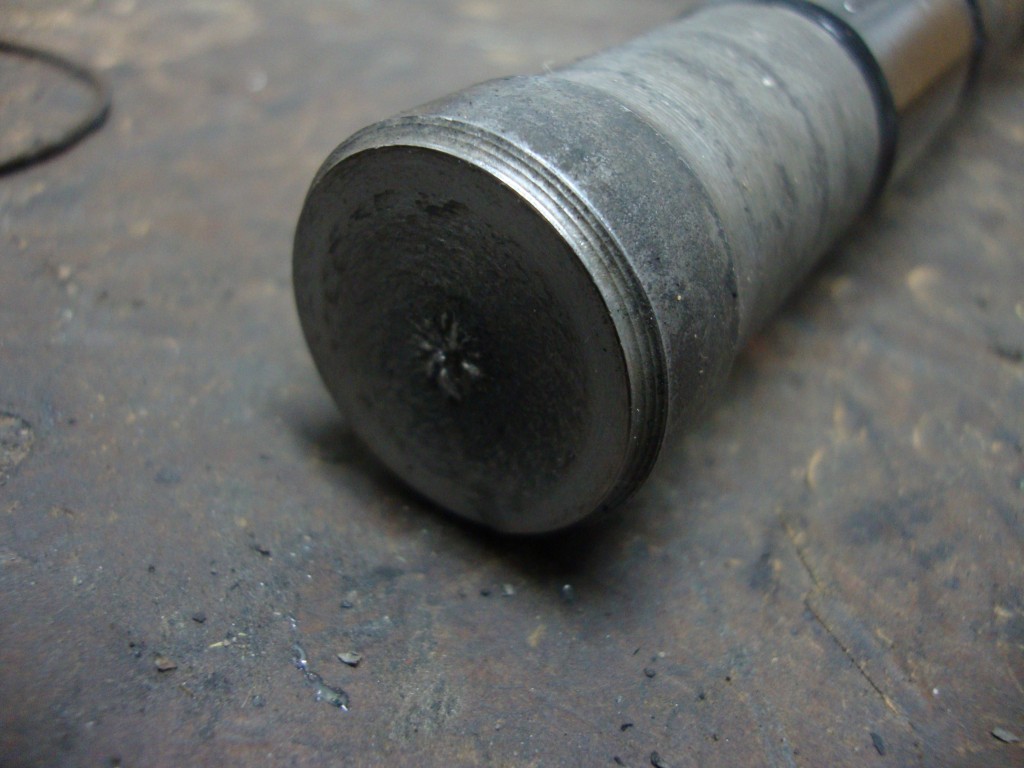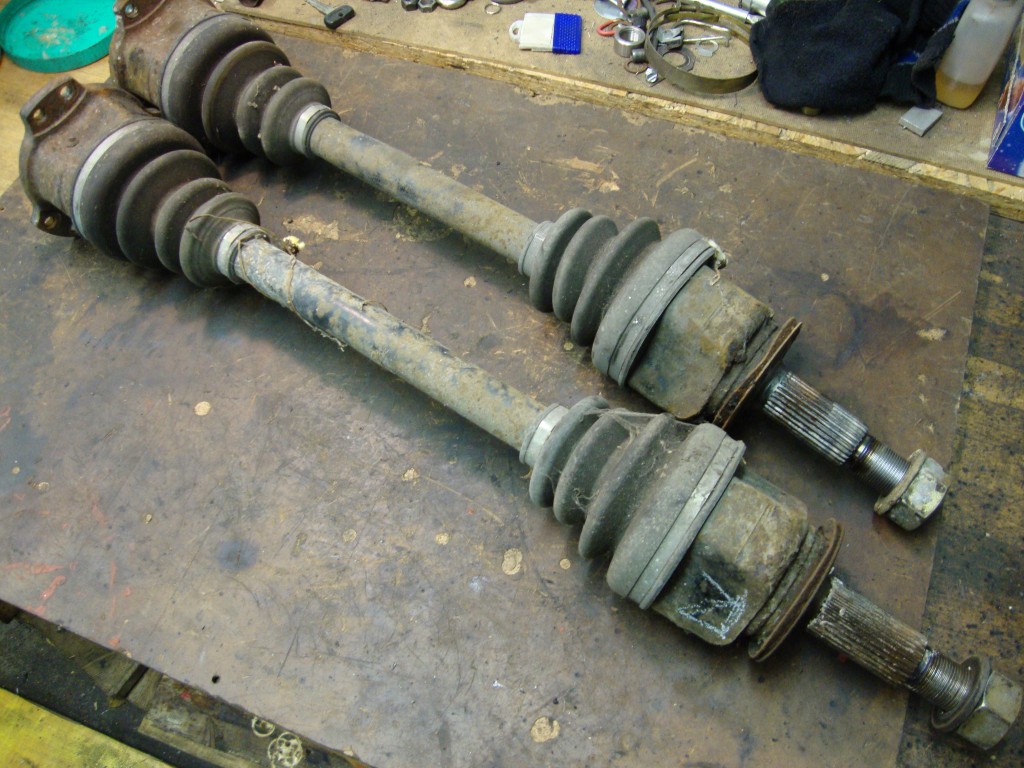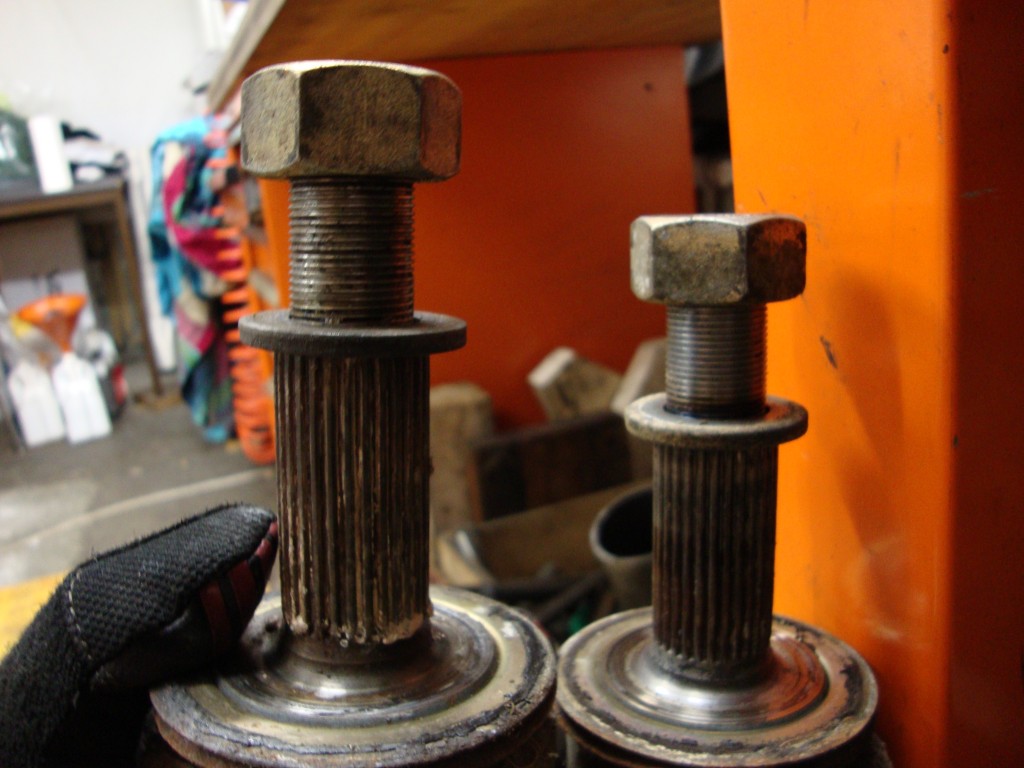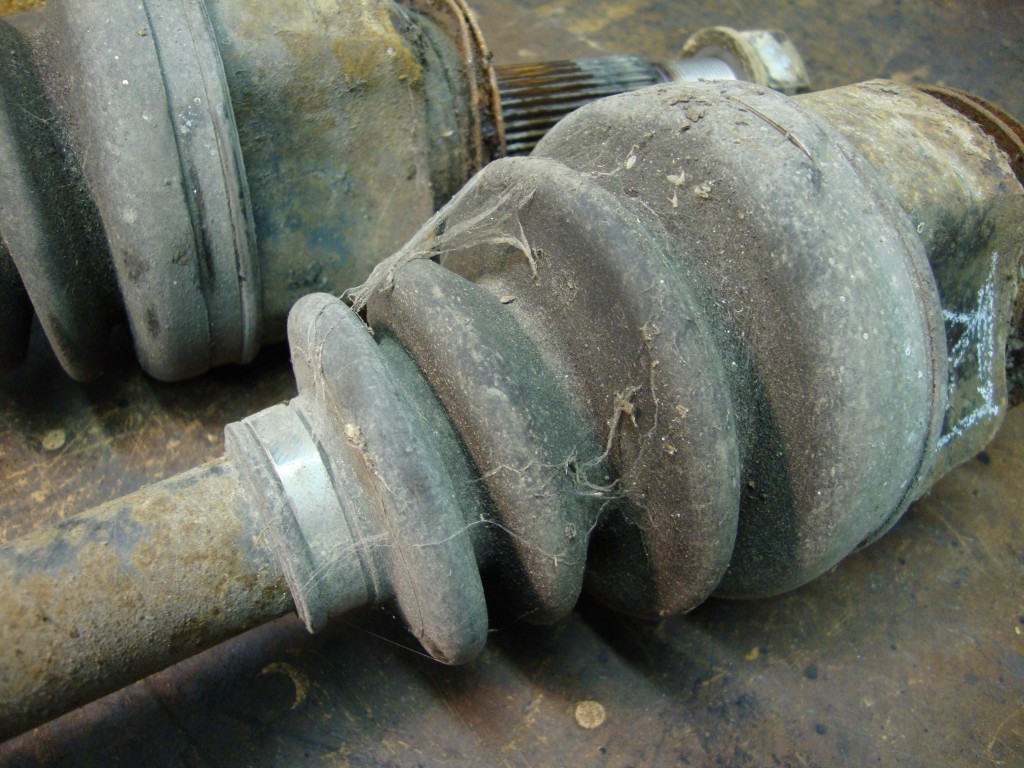When it comes to courageous drifting, kicking the clutch can sometimes be inevitable. It can be the preferred medicin to cure inefficient angle or just help initiate in front of the next corner. Either way it means great amounts of stress for the drivetrain. Especially when the clutch sits between an angry RB25 and a stock S13 rear end.
It all happened at the car’s season-end event in Anneau du Rhin, which has been covered earlier this month https://www.speed-industries.ch/wordpress/?p=309
I was trying hard to combine the two right turns nearest the pit area of the track, just after the long straight. The goal was to take both curves in one drift instead of manji through the whole section. I thought I’d best have the S13 stay in 3rd gear and therefore initiated violently, like a pitbull on steroids. Just before noon, the right-hand-side driveshaft let go after a brutal clutch kick…
Ok, now as the car proved to be very reliable for a whole season until then, I decided to analyse this more in-depth as usual. This was actually not my first driveshaft failure experience, so let’s go back:
In 2008 I swapped a 1.8l Turbo from a Mazda into an MK1 Suzuki Swift. Needless to say, the driveshafts had to be custom made or at least modified. The first attempt was to press and weld together two halfs of each shaft (Mazda and Suzuki).
Unfortunately this didn’t last too long, 350NM of tourqe tore the two shafts apart…
Second try was to shim the stock Mazda shaft on the outside, so it could accept the Suzuki joint for the cars wheel hub. This solution was strong enough to withstand the abuse. After approx. 10’000 kilometers, an outer joint started making noises and eventually fell apart.
Unlike the inner joint, the outer one was a ball bearing type, which seems to be weaker than the common „three spoke joint“ you find in most cars.
Now it was time to have a look at the S13’s damaged shaft:
The inner joint seemed to be fine, no play at all, tight and cool.
Grabbing the shaft at its outer end clearly showed, the outer joint was fucked up.
At this point I have to say, removing an S13’s driveshaft is nice and easy. With the proper tools at hand, it is done in less than 20 minutes and you don’t need to detach any suspension components. Once the candidate is on the bench, it can be disassembled in 5 minutes.
The inner joint is a classic „three spokes joint“ which in my case seemed to be in perfect shape. No scratches on the surfaces, could be pressed back and forth with no hesitations.
While trying to remove the rubber collar of the outer joint, the shaft slid right out of the collar, which is normally not possible due to the joint being held on the shaft by a lock ring…
I was shocked! After ripping off the silly rubber collar and removing some of the ever annoying grease, I was truly surprised.
Not about the fact that the outer joint also is of the stronger „three-spokes“ type, but that the shaft itself snapped! The brute power of the holy RB induced an amazingly clean and even torsional fracture of the shaft.
As the inner joint, the outer one also seemed to be quite unimpressed from 10 trackdays‘ abuse. My obvious finding at this stage was then, that the shaft joints of the S13 are damn strong… unlike the shaft itself…
Normally I would check what aftermarket dealers offer as an upgrade, following the motto „break it – upgrade it – race it“. But this time I wanted to really challenge the topic! Not only because the stronger shafts will set me back over $1000, but also because the source for used S-chassis parts is immense. Nissan parts, thanks to the „Gods of Nissan“, regularly suprise me by their great interchangeability between different models.
So I’ll spend some time comparing different driveshafts like S14, 300ZX, Skyline in order to find out, whether we can swap some components of the S13’s shafts for stronger ones.
While sourcing driveshafts of other models, it is also interesting to analyse and visualize the root cause of the damage. The stock shafts were able to cope with the 500hp RB25 setup for over 8’000 kilometers and various trackdays with not visual or audible harm. The moment, one shaft was torn apart, was during a heavy clutch kick via a 2-way LSD diff and new, stiky tires on a dry race track. So we might have material fatique from 4 drift events, but we surely had devilish peak tourqe put on the shafts while releasing the clutch at 5000rpm…
After all this means two tasks for me:
1 check parts interchangeabilities or upgrade
2 work on my technique (reduce clutch kicks)
But since the car must be kept ready, I quickly got my hands on a pair of used S13 shafts for a few bucks (including spider webs and sere leaves)
By the way, FYI, the shafts aren’t identical from left to right! The right one is about 30mm longer.
I ‚ll leave you with an impression of „S13 still live“ in its purest and deepest sense…
cheers – Chris
When it comes to courageous drifting, kicking the clutch can sometimes be inevitable. It can be the preferred medicin to cure inefficient angle or just help initiate in front of the next corner. Either way it means great amounts of stress for the drivetrain. Especially when the clutch sits between an angry RB25 and a stock S13 rear end.
It all happened at the car’s season-end event in Anneau du Rhin, which has been covered earlier this month https://www.speed-industries.ch/wordpress/?p=309
I was trying hard to combine the two right turns nearest the pit area of the track, just after the long straight. The goal was to take both curves in one drift instead of manji through the whole section. I thought I’d best have the S13 stay in 3rd gear and therefore initiated violently, like a pitbull on steroids. Just before noon, the right-hand-side driveshaft let go after a brutal clutch kick…
Ok, now as the car proved to be very reliable for a whole season until then, I decided to analyse this more in-depth as usual. This was actually not my first driveshaft failure experience, so let’s go back:
In 2008 I swapped a 1.8l Turbo from a Mazda into an MK1 Suzuki Swift. Needless to say, the driveshafts had to be custom made or at least modified. The first attempt was to press and weld together two halfs of each shaft (Mazda and Suzuki).
Unfortunately this didn’t last too long, 350NM of tourqe tore the two shafts apart…
Second try was to shim the stock Mazda shaft on the outside, so it could accept the Suzuki joint for the cars wheel hub. This solution was strong enough to withstand the abuse. After approx. 10’000 kilometers, an outer joint started making noises and eventually fell apart.
Unlike the inner joint, the outer one was a ball bearing type, which seems to be weaker than the common „three spoke joint“ you find in most cars.
Now it was time to have a look at the S13’s damaged shaft:
The inner joint seemed to be fine, no play at all, tight and cool.
Grabbing the shaft at its outer end clearly showed, the outer joint was fucked up.
At this point I have to say, removing an S13’s driveshaft is nice and easy. With the proper tools at hand, it is done in less than 20 minutes and you don’t need to detach any suspension components. Once the candidate is on the bench, it can be disassembled in 5 minutes.
The inner joint is a classic „three spokes joint“ which in my case seemed to be in perfect shape. No scratches on the surfaces, could be pressed back and forth with no hesitations.
While trying to remove the rubber collar of the outer joint, the shaft slid right out of the collar, which is normally not possible due to the joint being held on the shaft by a lock ring…
I was shocked! After ripping off the silly rubber collar and removing some of the ever annoying grease, I was truly surprised.
Not about the fact that the outer joint also is of the stronger „three-spokes“ type, but that the shaft itself snapped! The brute power of the holy RB induced an amazingly clean and even torsional fracture of the shaft.
As the inner joint, the outer one also seemed to be quite unimpressed from 10 trackdays‘ abuse. My obvious finding at this stage was then, that the shaft joints of the S13 are damn strong… unlike the shaft itself…
Normally I would check what aftermarket dealers offer as an upgrade, following the motto „break it – upgrade it – race it“. But this time I wanted to really challenge the topic! Not only because the stronger shafts will set me back over $1000, but also because the source for used S-chassis parts is immense. Nissan parts, thanks to the „Gods of Nissan“, regularly suprise me by their great interchangeability between different models.
So I’ll spend some time comparing different driveshafts like S14, 300ZX, Skyline in order to find out, whether we can swap some components of the S13’s shafts for stronger ones.
While sourcing driveshafts of other models, it is also interesting to analyse and visualize the root cause of the damage. The stock shafts were able to cope with the 500hp RB25 setup for over 8’000 kilometers and various trackdays with not visual or audible harm. The moment, one shaft was torn apart, was during a heavy clutch kick via a 2-way LSD diff and new, stiky tires on a dry race track. So we might have material fatique from 4 drift events, but we surely had devilish peak tourqe put on the shafts while releasing the clutch at 5000rpm…
After all this means two tasks for me:
1 check parts interchangeabilities or upgrade
2 work on my technique (reduce clutch kicks)
But since the car must be kept ready, I quickly got my hands on a pair of used S13 shafts for a few bucks (including spider webs and sere leaves)
By the way, FYI, the shafts aren’t identical from left to right! The right one is about 30mm longer.
I ‚ll leave you with an impression of „S13 still live“ in its purest and deepest sense…
cheers – Chris
